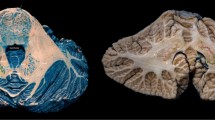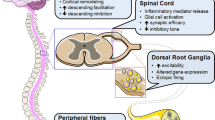Abstract
Significant functional recovery after spinal cord injury can be observed in rodents, in spite of the presence of extensive irreversible structural damage. One potential mechanism for functional regeneration of the corticospinal tract may involve the formation of new spinal circuits remote from the lesion that allow the lesion site to be by-passed and contact re-established with the original targets of the transected axons. In both traumatic and inflammatory lesions of the spinal cord, transection at the thoracic level is followed by extensive collateral sprouting at higher levels of the spinal cord. These collaterals can make contact with long propriospinal neurones in the cervical cord, which project to the lumbar ventral horn via the ventral funiculus. These new connections can serve as a ‘bridge’ to reconnect the corticospinal neurone to its target anterior horn cell. The integrity of this circuitry has been demonstrated by retrograde tracing with pseudorabies virus. Recuperation of electromyographic activity following stimulation of the motor cortex indicates that these new spinal circuits are functionally active. Such remodelling of spinal circuitry following spinal injury may play an important role in determining the extent of functional recovery.
Similar content being viewed by others
References
Bareyre FM, Kerschensteiner M, Misgeld T, Sanes JR (2005) Transgenic labeling of the corticospinal tract for monitoring axonal responses to spinal cord injury. Nat Med 11:1355-360
Bareyre FM, Kerschensteiner M, Raineteau O, Mettenleiter TC, Weinmann O, Schwab ME (2004) The injured spinal cord spontaneously forms a new intraspinal circuit in adult rats. Nat Neurosci 7:269-77
Gensert JM, Goldman JE (1997) Endogenous progenitors remyelinate demyelinated axons in the adult CNS. Neuron 19:197-03
Hiersemenzel LP, Curt A, Dietz V (2000) From spinal shock to spasticity: neuronal adaptations to a spinal cord injury. Neurology 54:1574-582
Holaday JW, Faden AI (1983) Spinal shock and injury: experimental therapeutic approaches. Adv Shock Res 10:95-8
Kerschensteiner M, Bareyre FM, Buddeberg BS et al. (2004) Remodeling of axonal connections contributes to recovery in an animal model of multiple sclerosis. J Exp Med 200:1027-038
Kerschensteiner M, Stadelmann C, Buddeberg BS et al. (2004) Targeting experimental autoimmune encephalomyelitis lesions to a predetermined axonal tract system allows for refined behavioral testing in an animal model of multiple sclerosis. Am J Pathol 164:1455-469
Kerschensteiner M, Schwab ME, Lichtman JW, Misgeld T (2005) In vivo imaging of axonal degeneration and regeneration in the injured spinal cord. Nat Med 11:572-77
McCrea DA (1992) Can sense be made of spinal interneuron circuits? Behavioral and Brain Sciences 15:633-43
Neafsey EJ, Bold EL, Haas G, Hurley-Gius KM, Quirk G, Sievert CF, Terreberry RR (1986) The organization of the rat motor cortex: a microstimulation mapping study. Brain Res 396:77-6
Schwab ME, Bartholdi D (1996) Degeneration and regeneration of axons in the lesioned spinal cord. Physiol Rev 76:319-70
Author information
Authors and Affiliations
Corresponding author
Rights and permissions
About this article
Cite this article
Kerschensteiner, M. Strategies for axonal repair in central nervous system diseases. J Neurol 254 (Suppl 1), I29–I32 (2007). https://doi.org/10.1007/s00415-007-1006-9
Issue Date:
DOI: https://doi.org/10.1007/s00415-007-1006-9




